<<PREVIOUS -
HOME -
CONTENTS -
NEXT>>
SPECTROSCOPY INDEX -
![]()
Astronomical Spectrograph
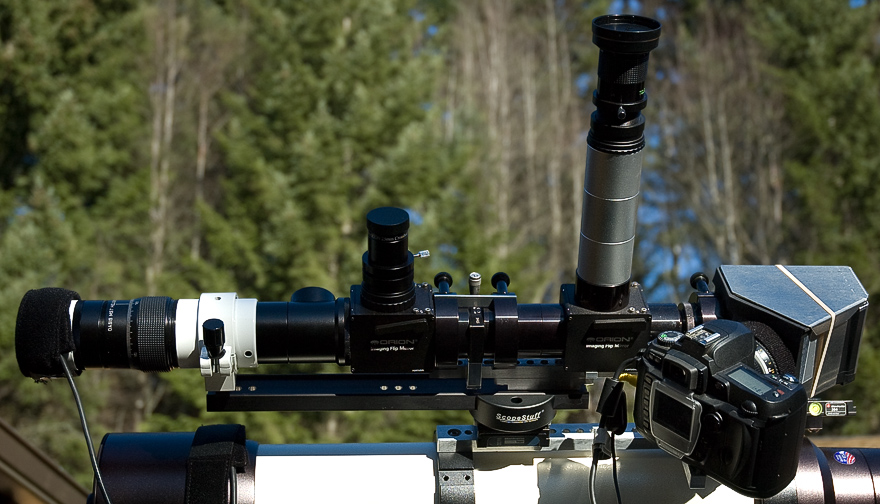
|
<<PREVIOUS -
HOME -
CONTENTS -
NEXT>>
SPECTROSCOPY INDEX -
![]()

|
The above 38 degrees classical astronomical spectrograph was built in November-December 2009. Most of the parts came from other guidescopes and other projects. I only needed to buy the adjustable slit and the two diffraction gratings to make this astronomical spectrograph operational.
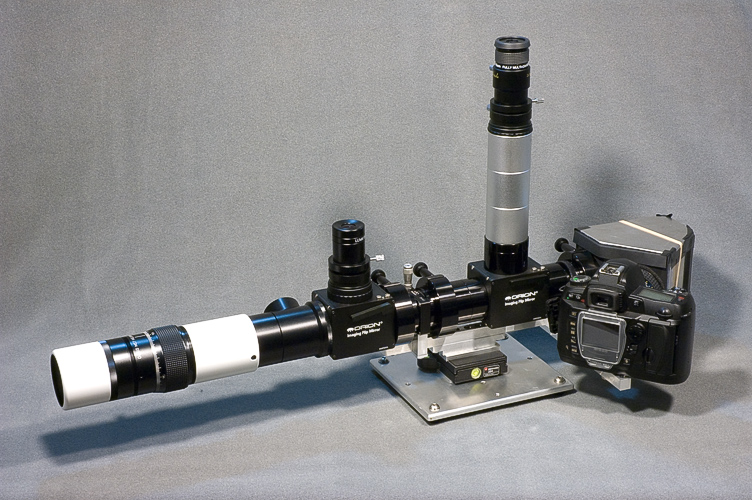
|
The objective lens is a Mini Borg 45ED f/6.6 refractor.
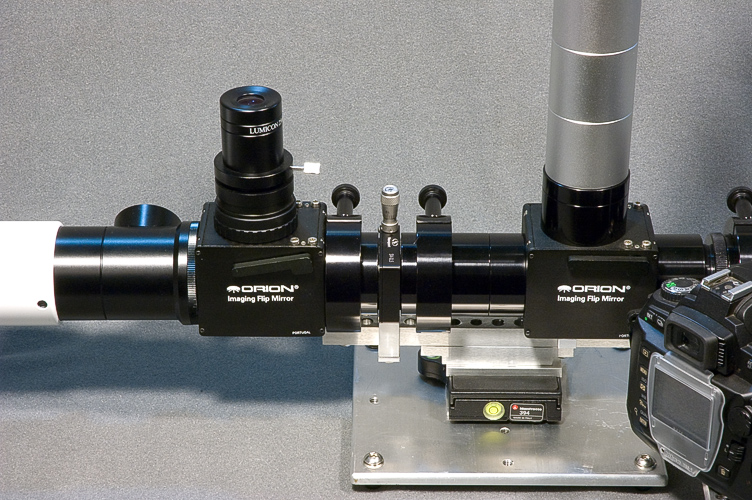
|
The first Orion flip mirror is used as a finder when used on a tripod and at the beginning of an imaging session to sync the star to the mount. The slit is a Newport compact adjustable width slit. The collimation lens is an Edmund Optics achromatic lens 40mm Dia. x 200mm FL.
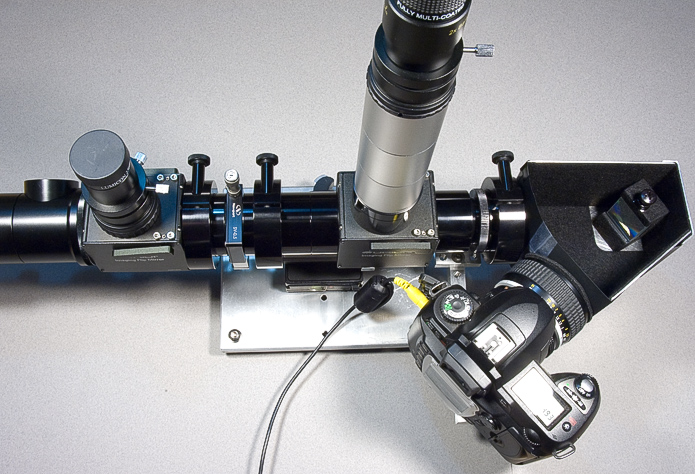
|
A second Orion flip mirror is positioned between the slit and the collimation lens. This flip mirror is used to view the backside of the slit and I use it to position the object in the slit for every object imaged. On the top of this flip mirror is an achromatic lens 40mm Dia. x 80mm FL and a Tele Vue 32mm Plössl eyepiece. I have used a 2x barlow and 15mm eyepiece but I now like the 32mm Plössl eyepiece because I can see more of the slit.
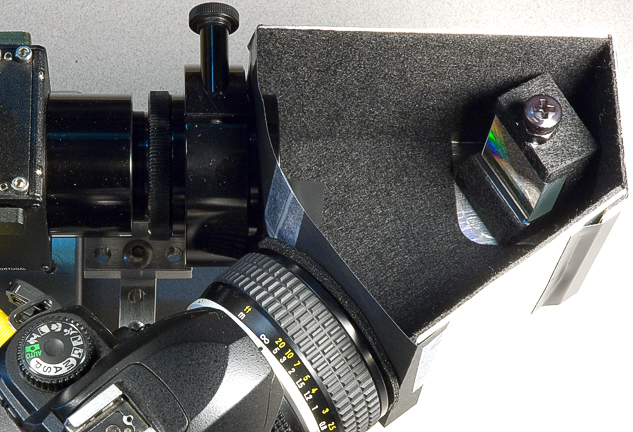
|
I use two diffraction gratings: 600 lines/mm and 1200 lines/mm. The above photo shows the 600 lines/mm diffraction grating installed in the astronomical spectrograph. Black felt is use in the inside to reduce reflections. The top of the grating enclosure is held on with a rubber band. The camera is a Nikon D70 DSLR with a Nikkor 50mm f1.2 lens set at f1.4 or f2.8. The astronomical spectrograph snaps on a tripod with the Bogen-Manfrotto RC4 Low Profile Rectangular Rapid Connect Adapter or the astronomical spectrograph replaces the guidescope on the Tele Vue NP-127is.

|
The above Betelgeuse star spectrum was taken the first night out (December 24, 2009) with the astronomical spectrograph at 1200 lines/mm. I was very pleased to see the double Na lines of Betelgeuse. The above spectrum was cropped. No other image processing was done on the spectrum image. Exposure time was 304.8 seconds at ISO 1600 with camera noise reduction on. White balanced was set for Sunny.
The below photo of the imaging setup was taken during the second night out (December 25, 2009) with the Moon past the 1st quarter and the Moon was high in the sky. The laptop is used for CCD polar alignment and the Cartes du Ciel 2.76c software is used for star charts. The bottom table top image shows the Nikon D70 DSLR spectrum image on the external monitor next to the laptop.
The step ladder is use to look at the back of the slit with the second flip mirror. The AP1200 mount go to will almost always put the star in the slit. I manually drive the mount to move the star to one end of the slit before turning off the mount tracking. The slit is parallel with RA and therefore the star drifts along the slit to create a wide spectrum. I take exposure times between 4 minutes and 12 minutes for each spectrum image.
|
Major Astronomical Spectrograph Components Going from the left side to the right side of the top photo:
|
|
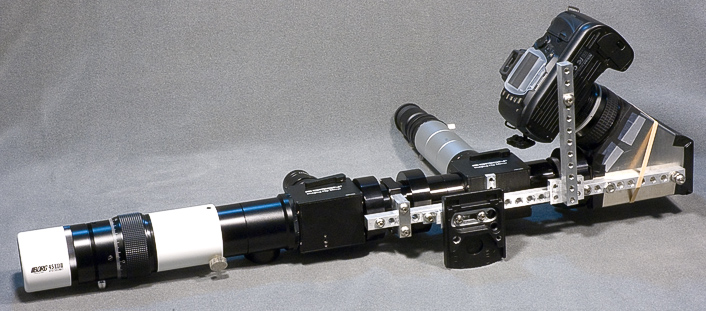
|
The above photo shows the bottom of the astronomical spectrograph before the Orion dovetail was mounted on it.